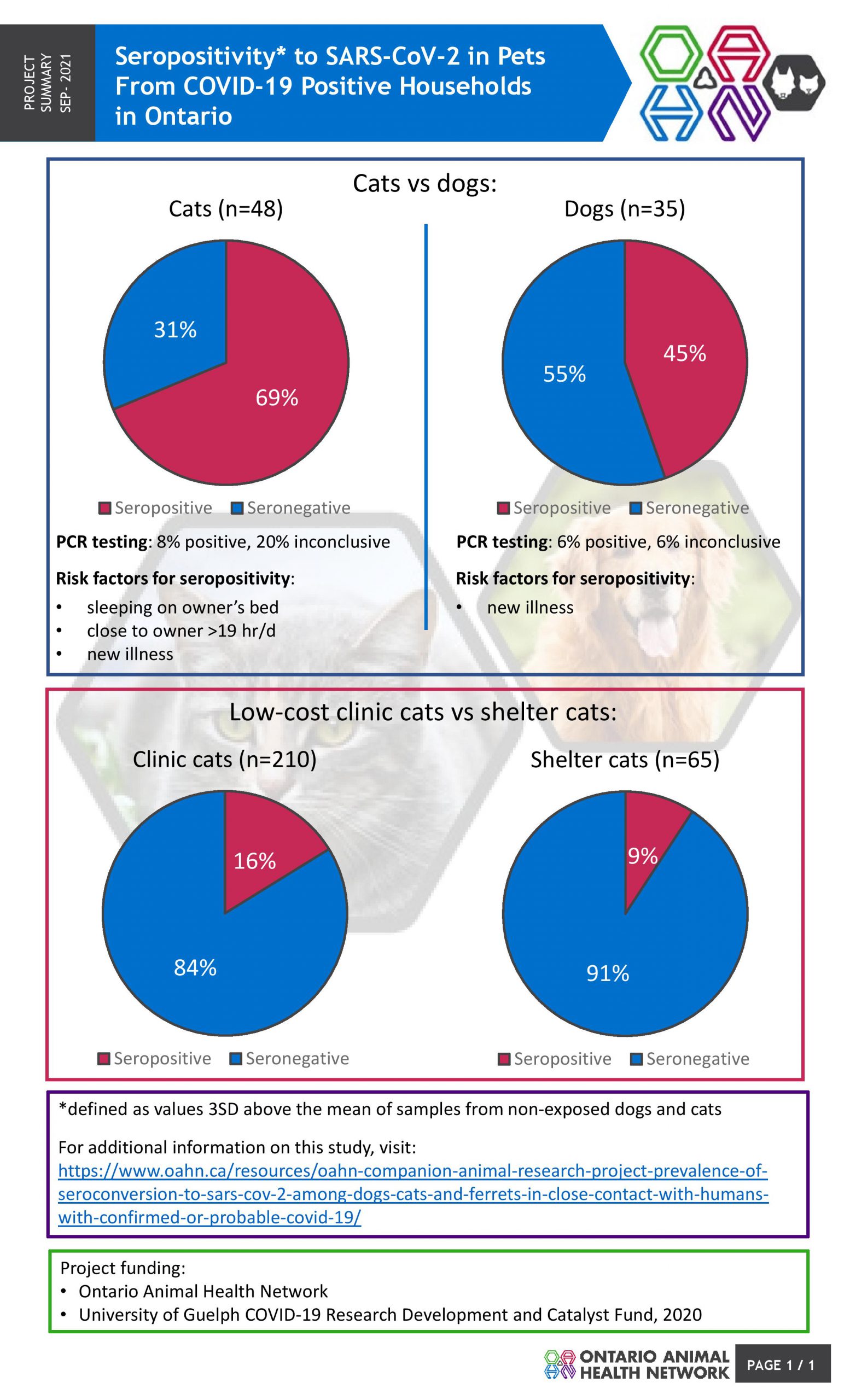OAHN Companion Animal Research Project: Prevalence of seroconversion to SARS-CoV-2 among dogs, cats and ferrets in close contact with humans with confirmed or probable COVID-19

Project Lead: Dr. Dorothee Bienzle
Collaborators: Dr. Scott Weese
Project Background
While it is known that cats and ferrets, and to a lesser extent dogs, can be infected with SARS-CoV-2, and while it appears that most infections in pets are the result of transmission from close contact with infected humans, it is unclear how often transmission from humans to pets occurs. Knowledge about the infection dynamics of this virus in pets and between people and pets is essential to help estimate the risks to animal health and the potential for transmission back to humans.
Objectives
1. To determine the prevalence of seroconversion to SARS-CoV-2 in a convenience sample of dogs, cats and ferrets in close contact with humans with confirmed or probable COVID-19 in the previous 6 months
2. To identify additional risk factors for seroconversion in pets (e.g. species, age, comorbidities, types of contact, number of infected contacts, suspected clinical signs of infection).
Executive Summary
We tested nasal, pharyngeal and/or rectal swabs from 51 cats and 35 dogs from households with SARS-CoV-2 infection in humans by qPCR, measured IgG and IgM antibodies to spike protein 1 in 48 cat and 56 dog blood samples, and surveyed owners for potential risk factors of zoonotic household transmission and for development of illness in pets. We also measured antibodies in 65 and 210 feline blood samples from shelter and low-cost clinics, respectively. Swabs yielded 7.8% and 5.7% PCR-positive results, and blood samples returned 67% and 44% positive results from household cats and dogs, respectively. Conversely, seropositivity among shelter and low-cost clinics was 9.3% and 16.3%. The likelihood of seropositivity was higher for cats but not dogs that slept on owners’ beds, spent >19 hours per day physically close to owners, or developed a new illness. These findings emphasize that pets in households of humans with COVID are at risk of SARS-CoV-2 infection and of becoming ill, and indicate that measures to prevent zoonotic transmission such as isolation of infected humans from pets should be instituted.
KTT
The findings from this study were reported in poster or virtual oral format at the European Congress of Clinical Microbiology & Infectious Diseases (ECCMID) and the Annual Symposium of the Centre for Public Health and Zoonoses in 2020 and 2021 . The presentations garnered a great deal of national and international attention with articles and/or interviews in multiple British newspapers, the New York Times, CBC, CTV and others.
Presentations and Posters
ESCMID Conference on Coronavirus Disease
Centre for Public Health and Zoonoses
Media
Zoo Animals Are Getting Experimental Coronavirus Vaccines – New York Times
Pets at High Risk of COVID-19 Infection From Owners, OVC Research Finds – U of Guelph
People with COVID Often Infect Their Pets – Scientific American
INFOGRAPHIC: Seropositivity* to SARS-CoV-2 in Pets  From COVID-19 Positive Households in Ontario
From COVID-19 Positive Households in Ontario

